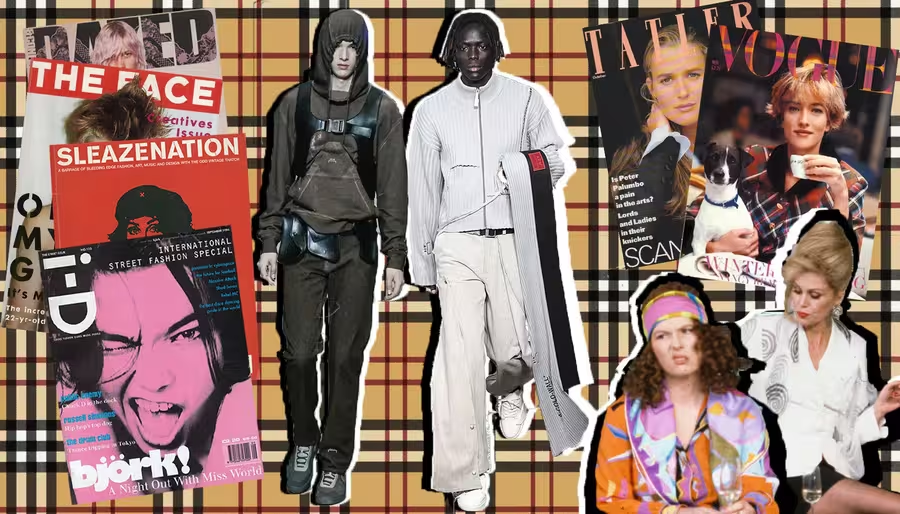
In recent years, the fashion industry has seen a surge in the appropriation of working-class aesthetics, with luxury brands transforming everyday items into high-end fashion statements. This trend raises questions about cultural appropriation, economic disparity, and the evolving dynamics of style and status.
From Satire to Mainstream: The Evolution of Working-Class Chic
The appropriation of working-class culture by high fashion is not a new phenomenon. In the 1990s, Britpop icons like the Gallagher brothers from Oasis popularized the casual, “lad” style that became synonymous with working-class youth in Northern England. Today, this aesthetic has been adopted and reimagined by luxury brands such as Louis Vuitton, Off-White, and Balenciaga.
May 2022: Panic on Wall Street. Balenciaga’s Spring-Summer 2023 show, held in the middle of the trading floor of the New York Stock Exchange, epitomized this trend. The show featured hooded models, apocalyptic set designs, and an exclusive Adidas x Balenciaga capsule collection that embraced the “blokecore” trend. This collection, with its soccer jersey-style t-shirts and retro logos, exemplifies the brand’s ability to transform everyday, accessible items into luxury fashion.
The Power Dynamics of Fashion Appropriation
The reappropriation of working-class attire by luxury brands is more than just a stylistic choice; it reflects deeper social and economic dynamics. “The most striking thing at play in this appropriation is the power dynamic,” explains Emma McClendon, associate curator at the FIT Museum. Historical examples, such as Chanel’s transformation of the little black dress from a working-class uniform to a symbol of elegance, highlight how fashion can invert social hierarchies.
More recently, John Galliano’s newspaper-print dress for Christian Dior in 2000 sparked controversy for glamorizing poverty by turning an object associated with homelessness into a luxury item. This trend continues with items like Vêtements’ DHL t-shirt and Prada’s nurse blouse, which draw directly from the uniforms of low-paid workers.
Economic Disparities and Social Implications
The luxury fashion industry’s adoption of working-class styles comes at a time of growing economic inequality. While NGOs warn about the widening gap between rich and poor since the COVID-19 pandemic, luxury brands capitalize on the aesthetics of the working class. This paradox is evident in the prices of these items, which are often far beyond the reach of the very people who originally popularized these styles.
“Today, tracksuits are trendy, but years ago, those who wore them were negatively stigmatized,” recalls British photographer Serena Brown on Refinery29. Her series “Back a Yard” celebrates the influence of popular culture in fashion while highlighting its lack of recognition. Brown points out the irony of wealthy individuals adopting styles that were once stigmatized, transforming them into symbols of status and coolness.
The Variable Social Significance of Clothing
This trend raises questions about the social significance of clothing and the authenticity of fashion. The same tracksuit that might be seen as a sign of delinquency in a working-class neighborhood is perceived as stylish and respectable when worn by a celebrity or a wealthy individual. This phenomenon, described by some as “carnivalesque reversal,” allows the upper class to dabble in working-class aesthetics without facing the associated stigmas.
The luxury fashion industry’s appropriation of working-class culture is a complex interplay of style, status, and power. While it celebrates and popularizes elements of working-class life, it also underscores the economic disparities and social dynamics that persist in society. As fashion continues to evolve, it remains to be seen how these trends will shape our understanding of culture and identity.
Written by Imane Moumen


